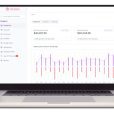In biotech circles, tackling a rare and difficult disease with few patients does not necessarily equate to targeting an unprofitable one.
In the case of fibrotic diseases specialist Pharmaxis (ASX: PXS), its proposed treatment for the rare blood cancer myelofibrosis presents a potential billion dollar-plus market, even though only about 15 in every 1 million people suffer the disorder in the United States. .
Myelofibrosis is a scarring of the bone marrow that interrupts the normal production of white and red blood cells and platelets.
This leads to fatigue, reduced immunity, clotting and bruising and bleeding.
Myelofibrosis sufferers typically are aged 50 to 80 and can expect to live an average of only five years. About 10 per cent will go on to develop leukemia.
“This is a particularly unpleasant disease with a high unmet need,” says Pharmaxis CEO Gary Phillips.
Pharmaxis’s proposed therapy is a compound called PXS-5505, which attacks the fibrosis at the heart of the disease. PXS-5505 aims to inhibit pan-Lysyl Oxidase (LOX), an enzyme closely implicated in inflammation and fibrosis.
“The mode of action in our drug is different to anything on the market or in the clinic,” Phillips says.
“It’s a unique mechanism of action, because it targets the matrix [inflammation] formation in the bone marrow and has disease modifying potential.”
Pharmaxis in February recruited the first patient for its next stage of clinical development, a phase 1a/2c trial looking at both the safety and efficacy of the molecule.
Work to date consists of a six-month safety study on healthy volunteers, as well as preclinical animal modelling that showed increased blood production and reduced spleen size.
(When the bone marrow is damaged, the spleen tries to take over production and is enlarged, causing fevers and bone pain).
To be conducted at sites in Australia and South Korea – two countries relatively untouched by Covid-19 – the dose escalation trial aims to recruit up to 18 patients in its initial stage.
A further dose expansion stage will enroll up to 24 patients.
First results are expected in the second half of 2021, with full results due a year later.
The trial follows the US Food & Drug Administration’s decision last year to grant ‘Orphan Drug’ designation to PXS-5505, in relation to myelofibrosis.
Pitched at diseases that affect 200,000 Americans or fewer, ‘Orphan’ status confers benefits such as tax breaks on research and development, potential expedited approval and a period of marketing exclusivity.
Currently, myelofibrosis is treated by a class of drugs called JAK (Janus kinase) inhibitors that provide symptomatic relief but do not ameliorate the disease. They also cause unpleasant side effects.
Despite the limitations of the category, sales of Novartis’s JAK drug Jakafi are worth around $US1 billion annually. While the Pharmaxis trial aims to affirm PSX-5505 as a suitable monotherapy, Phillips expects the drug to be used as an adjunct to – rather than a replacement for – the JAK inhibitors.
Alongside their myelofibrosis R&D, Pharmaxis’ respiratory drug Bronchitol is approved in numerous geographies including the US, Europe and Australia where it actively generates revenue.
A maintenance treatment for the debilitating lung condition cystic fibrosis, Bronchitol is licensed globally to Italian-based Chiesi. First sales in the US are underway, with Pharmaxis entitled to percentage of Chiesi sales as well as a manufacturing margin.
The company expects the cash flow from Bronchitol will help fund the ongoing development of PXS-5505 as well as variant LOX inhibitors for other hard-to-treat cancers.
These include other blood cancers, liver carcinoma, pancreatic cancer and glioblastoma (brain cancer).
With $22 million of cash and a circa $33 million market capitalisation, Pharmaxis is valued at a fraction of offshore peers carrying out myelofibrosis trials using different mechanisms of action.
Notably, the Nasdaq listed Constellation Pharmaceuticals and Geron Corporation are worth around $US1.1 billion and $US500m respectively. These companies are only slightly ahead of Pharmaxis in development, having posted phase 2 clinical results.
In a recent research report, broker Bell Potter valued Pharmaxis shares at 14 cents – two thirds higher than their current level.
“I’m not suggesting that with solid phase 2 data we would be a billion dollar company, but it’s conceivable we could be worth ten times or more where we are now,” Phillips says.
Pharmaxis welcomes investors to register for updates on their latest developments and industry research by joining their mailing list here.
*Owners of this website are PXS shareholders
- Amid dazzling returns, is now the time to join the diamond hunt? - November 10, 2021
- Two listed ag stocks that promise a bounteous harvest for investors - November 3, 2021
- ASX-listed e-gaming stocks show promise but are they in the main event? - October 27, 2021













Leave a Comment
You must be logged in to post a comment.